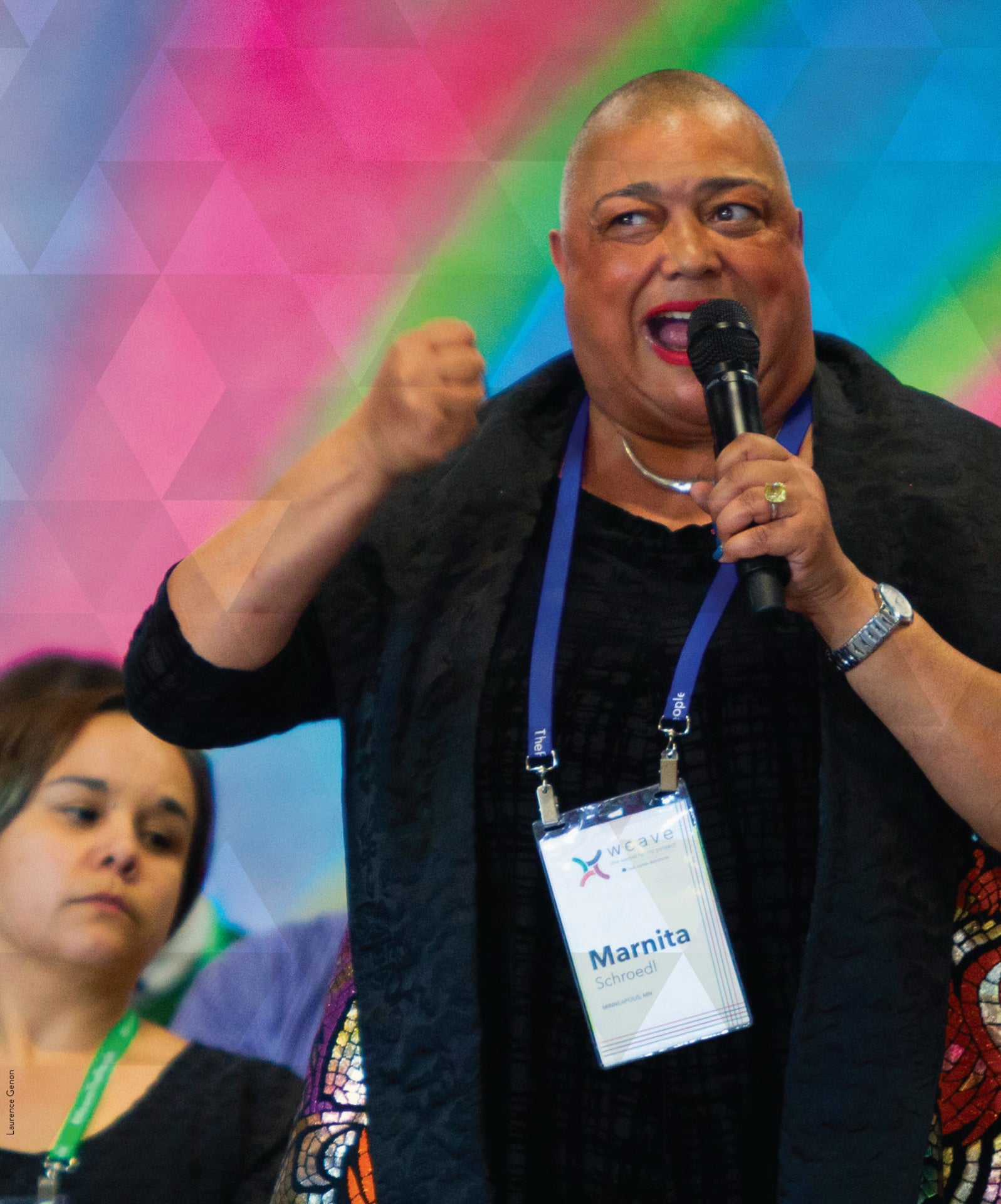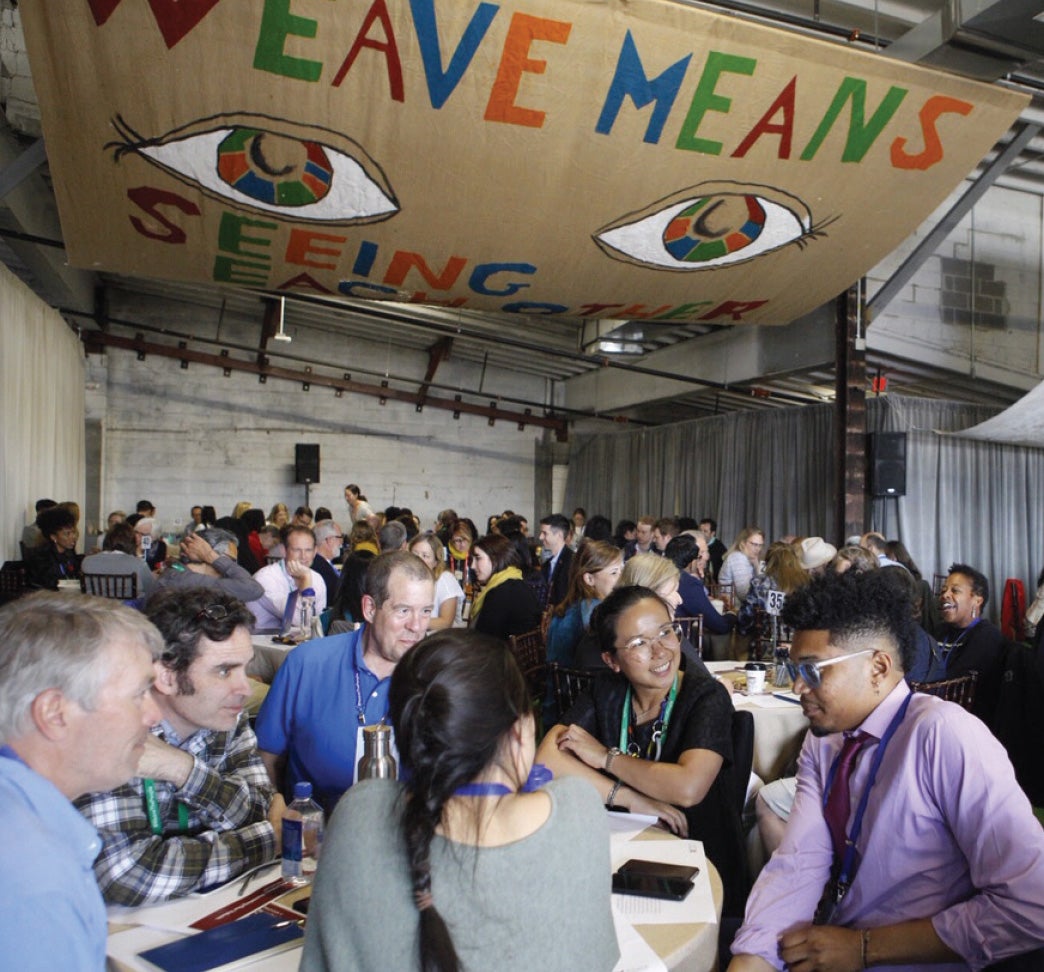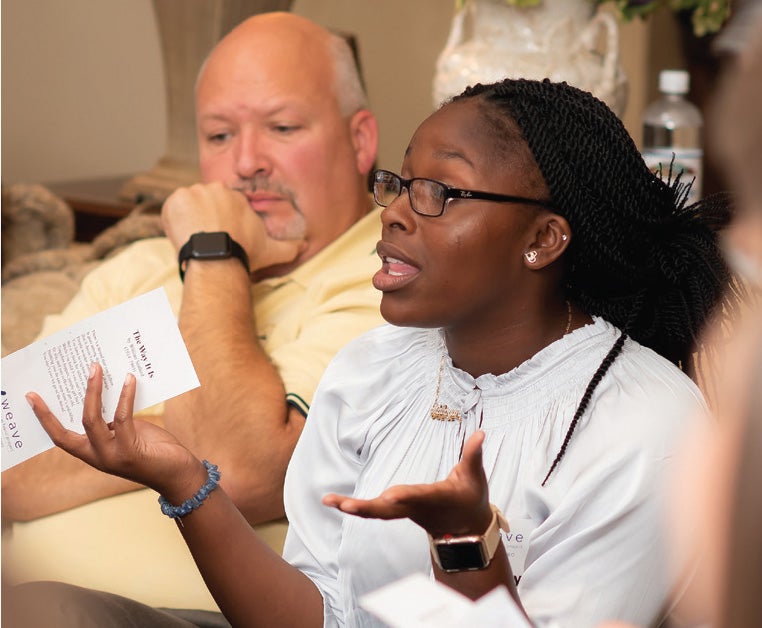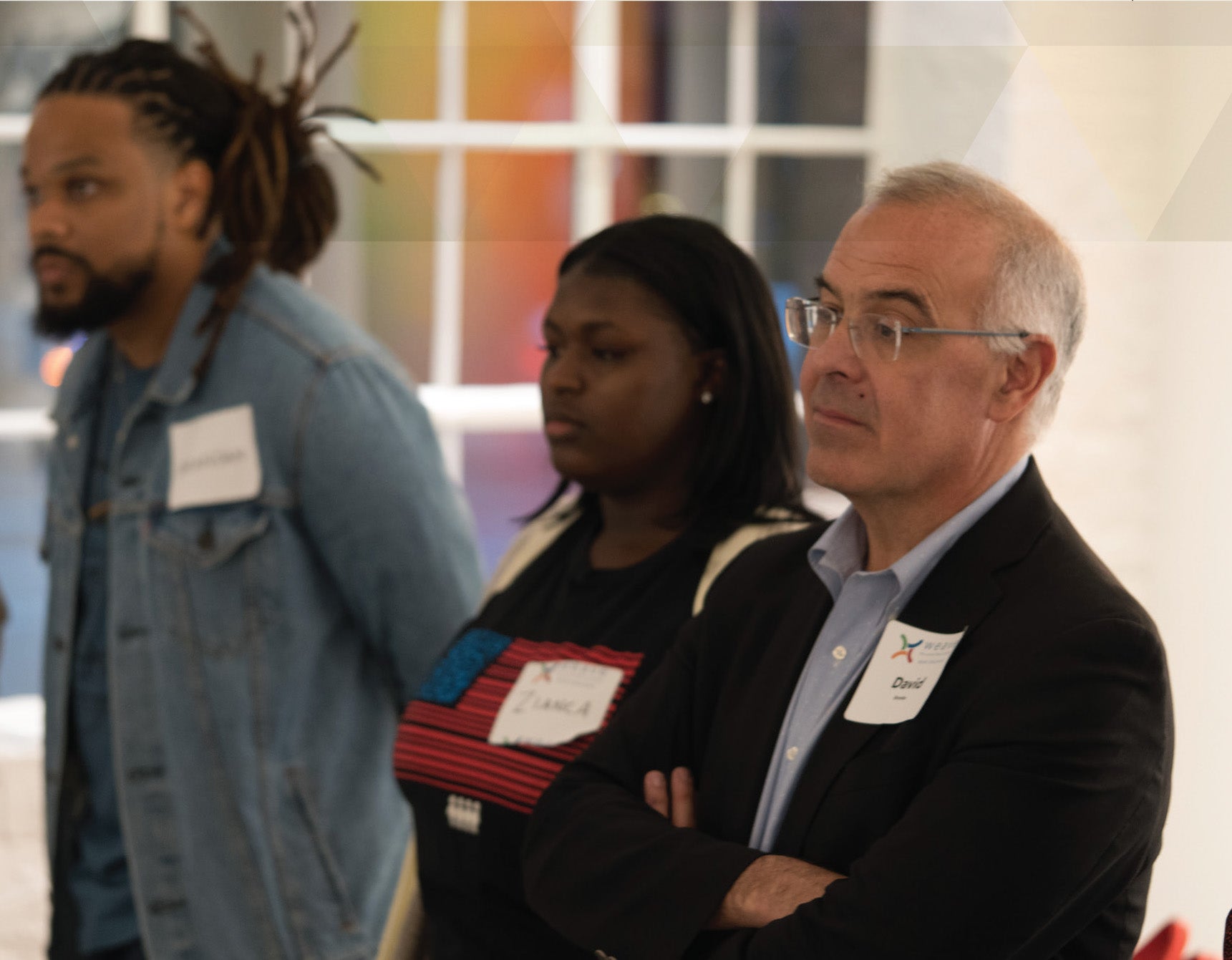 Weave started for sociological reasons, but then it got personal. It started because every column I was writing for The New York Times seemed to flow back to one underlying problem: social isolation and social fragmentation.
Weave started for sociological reasons, but then it got personal. It started because every column I was writing for The New York Times seemed to flow back to one underlying problem: social isolation and social fragmentation.
Whether it was surging suicide rates, 72,000 people dying each year from opioids, a generation of young people unable to climb out of poverty, loner mass shootings, or the rise of tribalism, racial animosity, and hatred politics, it all derived from the fact that so many people live in broken communities, surrounded by broken relationships, feeling invisible.
 I figured that social isolation is the core problem afflicting the United States, but I also discovered that all across the country, people are solving that problem. They are building community and repairing relationships. I wanted to know what we could learn from their example and how we could nationalize their effects. I figured the Aspen Institute was the right place to house such an effort, because our nation is riven by divides, and the Institute is in the bridge-building business.
I figured that social isolation is the core problem afflicting the United States, but I also discovered that all across the country, people are solving that problem. They are building community and repairing relationships. I wanted to know what we could learn from their example and how we could nationalize their effects. I figured the Aspen Institute was the right place to house such an effort, because our nation is riven by divides, and the Institute is in the bridge-building business.
So the thing started out as a program based around a bunch of words and concepts: community, social capital, social trust, polarization, tribalism. But then we spent many months traveling around the country meeting the people who are building community in their towns and listening to their stories.
 Take Lisa Fitzpatrick, who was leading a very normal life in Oklahoma City. One day about 35 years ago, she was riding in the passenger seat of a car when she turned her head and saw two 12-year-old boys who looked terrified. One lifted a gun, pulled the trigger, and the shot grazed Fitzpatrick’s face. They had to kill some random person, they later told the police, or their families would be hit with violence. “I wasn’t the victim,” Fitzpatrick now says. “I was collateral damage in a war I didn’t start, and they didn’t start.” The shooting brought a question to her mind: How had our society become so broken that at age 10 or 11, they felt their only option was to kill or be killed?
Take Lisa Fitzpatrick, who was leading a very normal life in Oklahoma City. One day about 35 years ago, she was riding in the passenger seat of a car when she turned her head and saw two 12-year-old boys who looked terrified. One lifted a gun, pulled the trigger, and the shot grazed Fitzpatrick’s face. They had to kill some random person, they later told the police, or their families would be hit with violence. “I wasn’t the victim,” Fitzpatrick now says. “I was collateral damage in a war I didn’t start, and they didn’t start.” The shooting brought a question to her mind: How had our society become so broken that at age 10 or 11, they felt their only option was to kill or be killed?
Twenty years later, she moved into a tough neighborhood in New Orleans with her two daughters, one of whose acquaintances was killed in a drive-by shooting. Fitzpatrick quit her job and decided to work with young people. Before long, some of the young men in the neighborhood began knocking on her door. She let them in and served them pizza and hot dogs. Pretty soon more young men started showing up at her door, and when the young women in her neighborhood realized where the cute guys were, they started showing up, too. One Saturday afternoon, Fitzpatrick was at home and counted 35 young people hanging around in her den. Their toys had been destroyed in Hurricane Katrina, so even though they were 16, they were still delighted to play with Legos. She finally asked them why they were spending their Saturday afternoons with a middle-age woman. They said it was because when they knocked, she was the only one who let them in.
Lisa is a weaver. Weavers are not people who organize powerful. They are people who want to serve their towns. They have a specific set of values. They are somewhere, not anywhere. They have planted themselves in a place, and they live to make their communities better. I have met hundreds, maybe thousands of weavers over the past year. They are everywhere. They are a movement that doesn’t even know it’s a movement. They have found a better way to live.
 In May, Weave brought together roughly 275 weavers at Union Market, in Washington, DC, for Weave The People, a gathering unlike any other. From the start, the proceedings were emotionally intense. At most conferences, people lead with their bios, but here people led with their vulnerabilities. One researcher talked about how the abuse she endured as a child pushed her to spend her life studying children’s emotional development. One woman talked about the daily pain of living with racism. One man joked that it wasn’t clear if the gathering was a nuclear reactor or a nuclear explosion—but there was certainly a lot of intense energy in the room.
In May, Weave brought together roughly 275 weavers at Union Market, in Washington, DC, for Weave The People, a gathering unlike any other. From the start, the proceedings were emotionally intense. At most conferences, people lead with their bios, but here people led with their vulnerabilities. One researcher talked about how the abuse she endured as a child pushed her to spend her life studying children’s emotional development. One woman talked about the daily pain of living with racism. One man joked that it wasn’t clear if the gathering was a nuclear reactor or a nuclear explosion—but there was certainly a lot of intense energy in the room.
The conference also kicked up the sort of tensions that are inevitable when you get this much intensity from such a wide array of people. The loudest speakers were on the left, and many people from rural America did not feel they had the space to talk. Some young people said they felt triggered by the pace of the schedule. Others said that unspoken power dynamics did not make them feel safe. Amid these expressions of trauma, the gathering did not produce a clear agenda for the future.
The tensions and protests, though, were effective: they were a reminder that the differences among the groups Weave is trying to link are wide. They were a reminder that the work of accompaniment is hard and necessary—seeing strangers deeply, responding to variations of wording and culture compassionately, entering into ways of thinking that might seem foreign.
So I ask you to identify the weaver habits in your own life and to move your life in a weaver direction. Sometimes it’s as simple as inviting your eight closest neighbors over for dinner. Sometimes it involves a “reach relationship,” finding a way to be in relationship with somebody completely unlike yourself. Sometimes it’s more formal, joining an organization that helps people transition out of prison, or one that helps young mothers with day care. It’s not just giving money. It’s building relationships.
Our job at Weave is to ask you to make a choice—to do something extra that will warm your heart and lift your soul. Visit us at weavesocialfabric.org if you want ideas for how to do this.
New York Times columnist David Brooks is the executive director of Weave: The Social Fabric Project at the Institute.